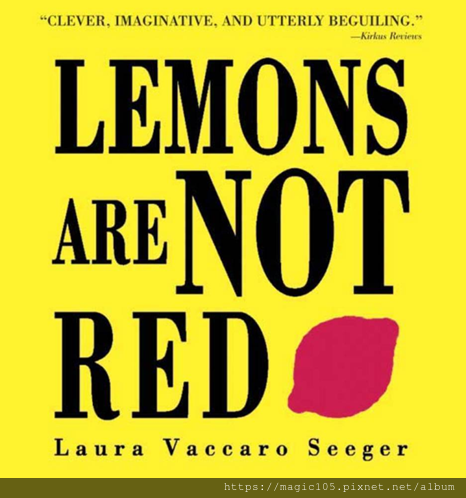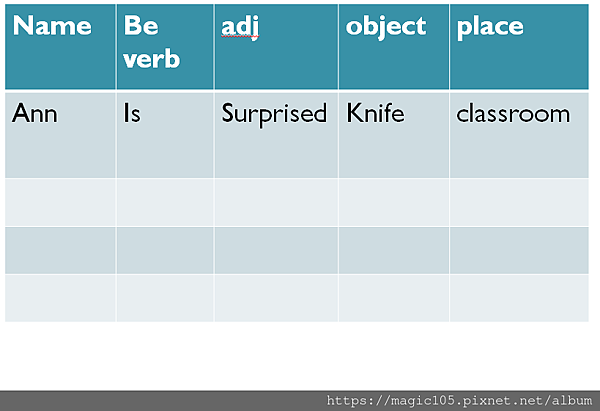聽說讀寫的四個能力中,個人認為英語的寫作是最困難的,同時也需要時間鋪陳。國外在教寫作的時候,通常是引導學生的想法,陪伴他一起寫,經過多次的revise 後,學生才會有一個作品產出,重質不重量,同時也積極培養學生的閱讀能力以及對於寫作的興趣。

最近上完DI 的課程,決定整理一下我對於中高年級英語寫作練習的操作。
在DI 的世界中,沒有人是失敗者,學生應該獲得不同的輔助讓他可以完成任務。盡量引導以學生為中心,讓學生知道適合自己的教材,選擇能完成的任務。
![]() 老師如何設計一張DI 學習單
老師如何設計一張DI 學習單
簡單的作法:
一張學習單有三個部分加一個留白處。學生可以根據他的能力決定學習單的完成度。( 這樣做的好處是,老師發學習單的時候,很方便,學生未來想挑戰晉級的時候,也可以自我調速。老師不用擔心HIGHER LEVEL 會看到或是參考答案,他們本來就會。反而是老師要思考給 HIGHER LEVEL 學生在空白處的任務。 )
| 1. slow level – | circle the word (to realize the words’ meaning) |
| 2. middle level | – fill in blanks and offer word bank (can choose the correct the word.) |
| 3. high level – | fill in blanks on their own ( can think of suitable words) |
| 4. A+ | Write a short paragraph and draw a picture. |
![]() 老師在備課的時候可能要辛苦一點,學校也要能 SUPPORT 有足夠的額度可以提供給老師印學習單,可是操作一段時間後,老師會發現,上課時,會變得比較輕鬆,老師其實只要發布任務行間巡視就好,對於七個班的科任老師來說,還是有一定好處的。
老師在備課的時候可能要辛苦一點,學校也要能 SUPPORT 有足夠的額度可以提供給老師印學習單,可是操作一段時間後,老師會發現,上課時,會變得比較輕鬆,老師其實只要發布任務行間巡視就好,對於七個班的科任老師來說,還是有一定好處的。
![]() 課程實作:
課程實作:
老師發下學習單的時候,說明講解任務。學生可以一關一關破,當然也可以直接挑戰星星數量較高的。並講解空白處的A+任務。 (這邊可以根據老師課程的內容做改變。) 如果學生用水汪汪的大眼睛望著你,老師可以下去直接依照他的程度指定他任務,或是請他們從一顆星星開始。

![]() 學生書寫學習單時,由他決定老師是否要介入。把學習自主權,還給學生。
學生書寫學習單時,由他決定老師是否要介入。把學習自主權,還給學生。
如果學生都熟悉操作模式,可以請他們製作以下圖表,放在桌面上,他可以選擇,老師是否要介入幫忙,或是他是否想要幫助其他學生。

![]() 拿 LEMONS ARE NOT RED 當例子
拿 LEMONS ARE NOT RED 當例子

老師用下面的範例做聽力練習。

![]() 高年級的寫作練習 How to teach free writing?
高年級的寫作練習 How to teach free writing?
真實的寫作,通常都有目的性,無論是給朋友的賀卡,小紙條,或是寫信給聖誕老人,都有一個目的。其次是觀眾,誰會看到這封信,決定你要用什麼語氣。最後是整個寫作的架構。
| 1. Purpose | (letter to Santa, greets to friends…) |
| 2. Audience | (Santa, friends… ) |
| 3. Direction | self introduction the main purpose Greetings in the end |
![]() 實際操作練習
實際操作練習
文章寫作一定從範本開始,老師可以找一個小短文,找到適合的地方挖空格。
教學的時候,先評量學生有怎麼樣的能力,例如: 高年級的學生,已經學 地方,活動,情緒,動物等等。
接著,以小組為單位進行創意發想,老師可以提供下面的表格,讓學生發想單字。

最後,提供學生寫作的目的。觀眾。以小組為單位,完成下面學習單,
Write a letter to your friends telling them they should visit your amazing house.

小組發表後,在進行個人任務。
Lower level 學生已經有了範本
middle level 學生可以在思考新的單字,創作。
High level 學生有能力可以進行free writing
![]() How to establish Ss' creativity?
How to establish Ss' creativity?
台灣的學生有能力寫作可是不知道要寫什麼。在國中小階段,建議都是以小組為單位,按部就班提供框架。
1. 思考學生學了什麼
2. 做表格 (一個主題至少有四個單子)
3. 讓小組以這些單字造句,越多越好
4. 最後,把這些句子,組合成一個故事。

最後,差異化教學範圍實在是太廣了,感謝MIA 老師推薦了一本書,給想要自學的老師參考唷
![]() A Practical Guide to Tiering Instruction in the Differentiated Classroom
A Practical Guide to Tiering Instruction in the Differentiated Classroom
![A Practical Guide to Tiering Instruction in the Differentiated Classroom by [Sarah Armstrong, Stephanie Haskins]](https://m.media-amazon.com/images/I/51+bOLjK4-L.jpg)
(PHOTO CREDIT AMAZON )
![]() About the Author
About the Author





 留言列表
留言列表